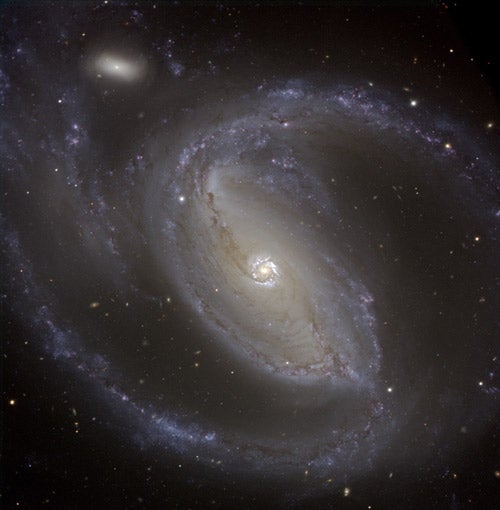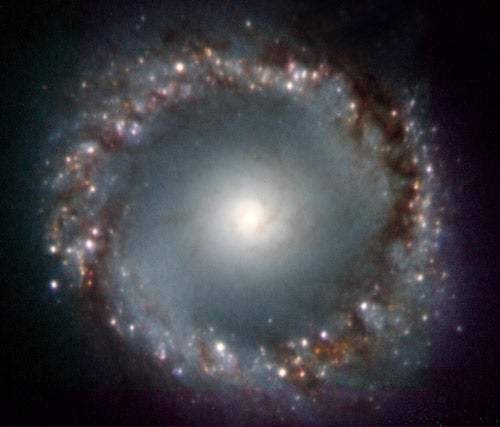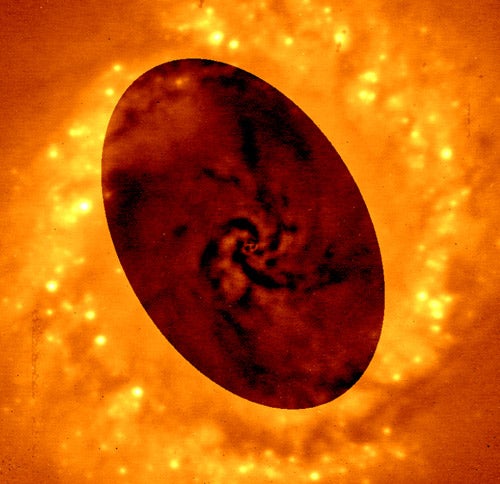Astronomers using the European Southern Observatory’s (ESO) Very Large Telescope (VLT) have imaged the surroundings of a supermassive black hole, revealing a network of gas and dust filaments channeling into the black hole.
The astronomers studied active galaxy NGC 1097 in the southern constellation Fornax to learn more about what feeds the supermassive black hole in its center. Because the galaxy’s nucleus is faint compared to many active galactic nuclei (AGN), astronomers believed the black hole swallowed only a small amount of matter at a time.
The astronomers used VLT’s adaptive optics to achieve a resolution of 0.15″ and were able to resolve the central ring in greater detail. These new images show over 300 star-forming HII regions, shown as white knots sprinkled throughout the ring. This is 4 times more star-forming regions than astronomers originally thought existed in the ring.
The curling of the filament spiral as it approaches the center confirms the presence of a central supermassive black hole. In addition, “This network closely resembles those seen in computer models,” says Witold Maciejewski of the University of Oxford, one of three coauthors of the October Astronomical Journal paper.
NGC 1097 is 45 million light-years away and shines at magnitude 9.5; it can be seen as a bright disk in amateur telescopes.












